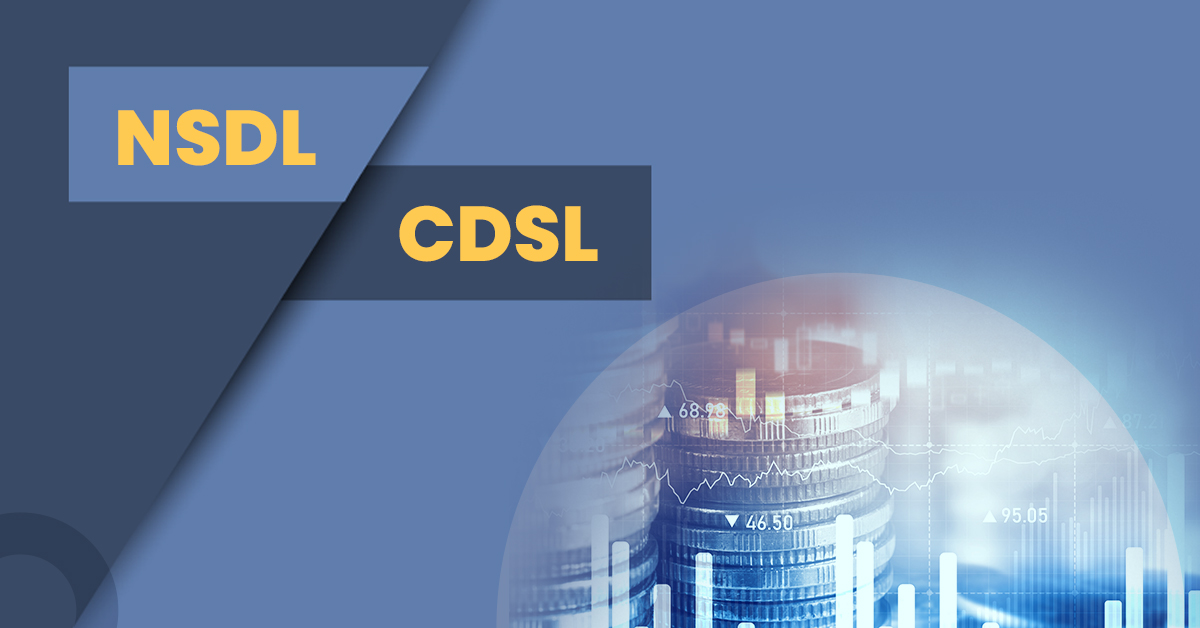What Is the Difference Between NSDL and CDSL?


Since the digitalisation of trading, depositories have played a significant role in facilitating the storage of underlying securities and seamless exchange in general. They speed up buying and selling shares by negating the need for the transfer of share certificates. Furthermore, depositories assist companies in distributing dividends to their respective shareholders.
In the Indian stock market, two depositories store all the shares in domestic circulation – NSDL and CDSL. If you are new to the share market, it can get confusing to choose between the two. This blog explains the differences between the two depositories and will help you make a well-informed choice. Keep reading!
What Is NSDL?
The National Securities Depository Limited (NSDL) came into existence in August 1996 (Mumbai). It is India’s oldest and largest share depository, having around three crore active investors onboarded. Furthermore, it has more than 58,553 depository participant service centres spread across 2,000 cities in the country.
The omnichannel platform allows investors to store stocks, bonds, debentures, commercial papers and mutual funds. In addition, it offers facilities like Dematerialisation services, rematerialisation services, transfers between depositories, off-market transfers, lending of securities, collateral and mortgage of securities and more.
What Is CDSL?
The Central Depository Services (India) Limited (CDSL) started operations in Mumbai in 1999. It is the second largest share depository in the country, having over 7.6 crore active customer accounts. The platform offers all the services the National Securities Depository Limited provides and has around 584 depository participants spread all over India.
Difference Between NSDL and CDSL
The difference between NSDL and CDSL are as follows:
Stock Exchange
The main point of differentiation between NSDL and CDSL is the stock exchange they service. NSDL works for the National Stock Exchange (NSE). It stores the electronic copies of stocks, bonds, ETFs, etc., traded on the NSE.
The CDSL, on the other hand, stores digital copies of financial assets traded on the Bombay Stock Exchange (BSE).
Promoters and Shareholders
The primary promoter of NSDL is the National Stock Exchange. Furthermore, its shareholders are as follows:
- HDFC Bank
- State Bank of India
- Canara Bank
- Union Bank of India
- Standard Chartered Bank
- Citibank
- IDBI Bank
- Deutsche Bank A.G
- India Alternatives Private Equity Trust – IAPE Fund II.
- IIFL Special Opportunities Fund
- Kotak Mahindra Life Insurance Company Limited
- The Hongkong and Shanghai Banking Corporation Limited
- Administrator of the Specified Undertaking of the Unit Trust of India- Unit Scheme 1964, etc.
The main promoter of CDSL, on the other hand, is the Bombay Stock Exchange. Its shares are held by the following entities:
- State Bank of India
- Bank of Baroda
- Bank of India
- Standard Chartered Bank
- HDFC Bank Limited
- Canara Bank
Active Users
According to the data recorded on November 30, 2022, the National Securities Depository Limited has an active user count of 2.99 crores, while the Central Depositories Services Limited has 7.62 crore, active users.
Format of Demat Account Number
NSDL has a 16-character alphanumeric Demat account number that starts with ‘IN’ and consists of 14 numbers that follow. However, CDSL has a 16-digit Demat account number.
Number of Registered Depository Participants
According to the data as on November 2022, the number of registered depository participants in NSDL is 282. Whereas for CDSL, it stands at 584.
Which One Is Better?
Now, which depository is better to start your investment journey?
The answer to this dilemma is unknown because there is little of a stark difference between the two equally competent depositories other than the exchanges they service. Moreover, both are under the supervision of the Securities and Exchange Board of India (SEBI).
Stockbroking firms generally select the depository they associate with based on fees, services and other features offered that contribute to the broker’s incremental ease of conducting business. Moreover, the platform a brokerage firm will choose depends on its depository participant.
As an investor, you can check where the concerned depository participants registered their firm. Then, based on your personal preference, you can open a Demat account with a company that caters to your specific requirement.
Some depository participants, like the State Bank of India, are registered on NSDL and CDSL. In such cases, the investor can select their depository of choice.
Frequently Asked Questions (FAQs)
How much time does it take to transfer shares from NSDL to CDSL?
Normally, it takes about 3 to 4 hours to transfer shares from the Demat account of one depository to another. However, if one transfers their share from a CDSL to NSDL account, the process gets completed in around 30 minutes.
Can one open more than one Demat account?
Yes, one can open more than one Demat account in India. However, it is impossible to do so under the same broker or depository participant. What’s more, there will be a maintenance charge for each Demat account, even if it is dormant.
How much does CDSL charge for transferring shares?
CDSL charges ₹25 or 0.03% of the transfer value, whichever is higher at the time of share transfer. There is an additional 18% GST levied on the amount so determined. Furthermore, you must also pay a stamp duty of 0.015% on the calculated amount.
How can one differentiate between NSDL and CDSL Demat account numbers?
The Demat accounts for CDSL consist of 16 digits, while the ones for NSDL start with ‘IN’ and consist of 14 digits.
Are CDSL shares good for long-term investment?
CDSL has a wide array of stocks that have excellent fundamentals and a strong potential for growth in the long run. Thus, investors should give them a look.




